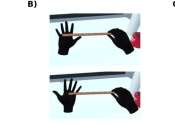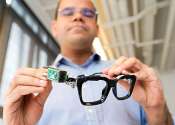Virtual reality (VR) is a technology which allows a user to interact with a computer-simulated environment, whether that environment is a simulation of the real world or an imaginary world. Most current virtual reality environments are primarily visual experiences, displayed either on a computer screen or through special or stereoscopic displays, but some simulations include additional sensory information, such as sound through speakers or headphones. Some advanced, haptic systems now include tactile information, generally known as force feedback, in medical and gaming applications. Users can interact with a virtual environment or a virtual artifact (VA) either through the use of standard input devices such as a keyboard and mouse, or through multimodal devices such as a wired glove, the Polhemus boom arm, and omnidirectional treadmill. The simulated environment can be similar to the real world, for example, simulations for pilot or combat training, or it can differ significantly from reality, as in VR games. In practice, it is currently very difficult to create a high-fidelity virtual reality experience, due largely to technical limitations on processing power, image resolution and communication bandwidth. However, those limitations are expected to eventually be overcome as processor, imaging and data communication technologies become more powerful and cost-effective over time.
Virtual Reality is often used to describe a wide variety of applications, commonly associated with its immersive, highly visual, 3D environments. The development of CAD software, graphics hardware acceleration, head mounted displays, database gloves and miniaturization have helped popularize the notion. In the book The Metaphysics of Virtual Reality, Michael Heim identifies seven different concepts of Virtual Reality: simulation, interaction, artificiality, immersion, telepresence, full-body immersion, and network communication. The definition still has a certain futuristic romanticism attached. People often identify VR with Head Mounted Displays and Data Suits.









